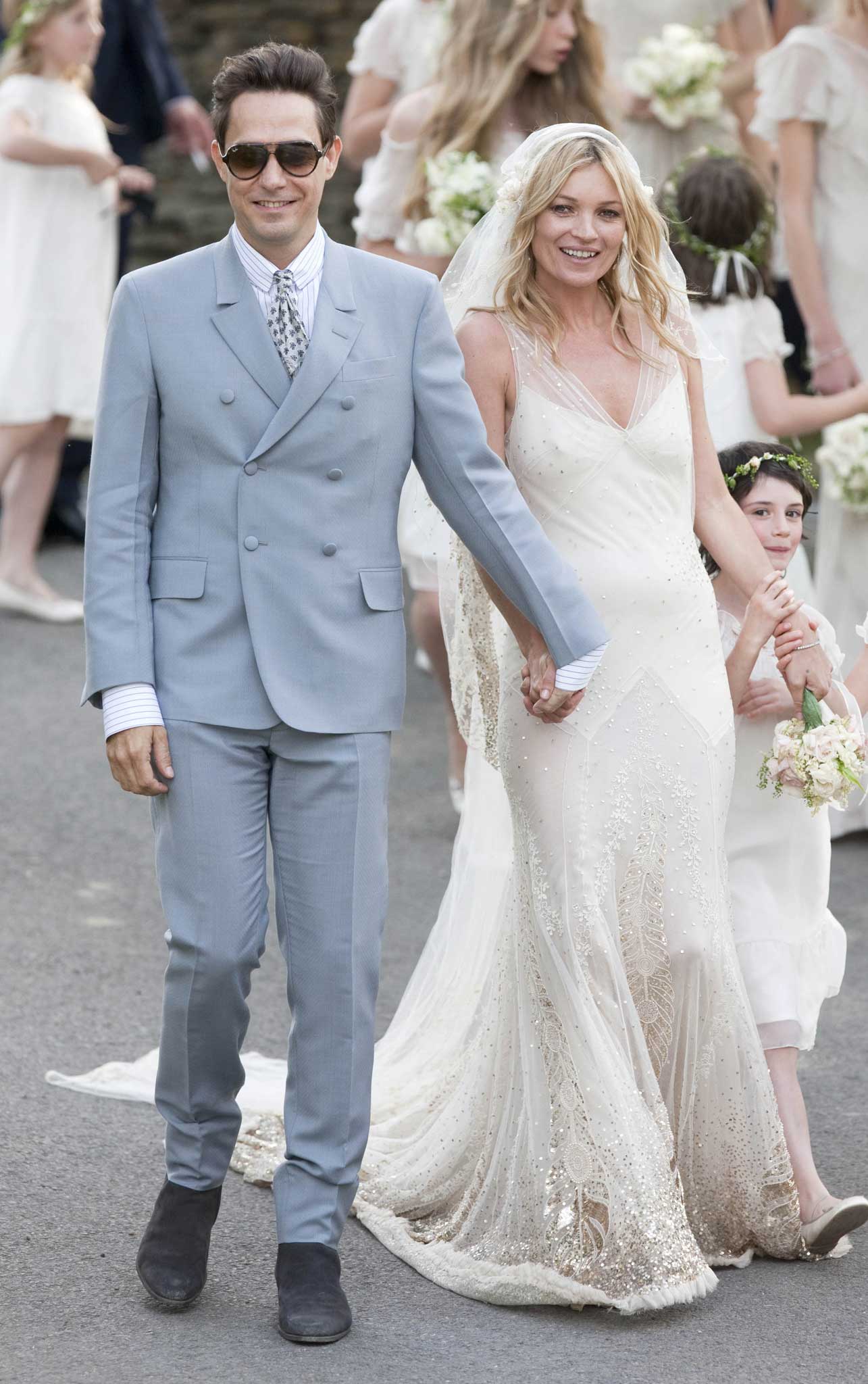Kate Moss's John Galliano gown takes centre stage at the V&A's new show Wedding Dresses
The model wore the dress for her wedding to Jamie Hince in 2011

For many people, the focus of a wedding isn't the pomp and circumstance of the ceremony, but the dress on the back of the bride, plain and simple. Or rather, not so plain and simple: in centuries past, the dress was a mark of social standing, the elaboration of her trousseau, a display of wealth.
Today, according to Edwina Ehrman – curator of the exhibition, Wedding Dresses 1775-2014, at London's Victoria & Albert Museum – the key is individuality, and expression of the bride's personality. "I think wedding dresses need drama and presence – you need to gear yourself up to walk down the aisle," she says. "You want to glow."
Kate Moss's John Galliano dress is one of the centrepieces of the V&A exhibition – "He is the only designer with three dresses in the exhibition," says Ehrman. But Moss's dress is the focus, just as it was of a media storm on the day she married – only to be surpassed by her namesake, Kate Middleton, who married two months earlier.
According to Ehrman, both were masterpieces of the marital arts. "The back of the dress is incredibly important, that's something Sarah Burton got so right with the McQueen dress for Kate Middleton," she says. When it came to the other Kate: "One thing that struck me is how well it worked, in all the pictures. The way the sequins trickled down the dress into this great puddle at the bottom." Reportedly, Moss brought her wedding forward a day to accommodate photographer Mario Testino, who was charged with immortalising the day – "reasoning, with a model's canny logic, that the ceremony will last minutes but the photographs will be forever," reported Hamish Bowles in American Vogue.
Galliano's deceptively simple design for Moss was the result of four marathon fittings and months of preparation. The gown itself took its visual cues from the streamlined styles of the Jazz Age, most notably The Great Gatsby: Galliano stated that he and Moss were inspired by Zelda Fitzgerald, the beautiful and troubled wife of Gatsby's author F Scott Fitzgerald.
Hence, the gown became a masterpiece of the technique of bias-cutting, originally developed in the Twenties and Thirties and which became one of Galliano's aesthetic signatures during his rise to prominence in the Nineties. Ehrman highlights the best examples in the exhibition as being "those dresses which represent a synergy between designer and client".
Beyond debates over sequins, bias-cuts, lace and LEDs (we can never forget those frocks that literally lit up the screen in My Big Fat Gypsy Wedding), living the dream seems to be the one constant demand of any wedding gown. "I've talked to quite a few brides and what they all agreed on is that you need a dress that gives you presence," says Ehrman. "There has to be a certain amount of fantasy in it. You have to feel transformed".
Wedding Dresses 1775-2014 is at the V&A, London SW7, until March 2015
Subscribe to Independent Premium to bookmark this article
Want to bookmark your favourite articles and stories to read or reference later? Start your Independent Premium subscription today.

Join our commenting forum
Join thought-provoking conversations, follow other Independent readers and see their replies